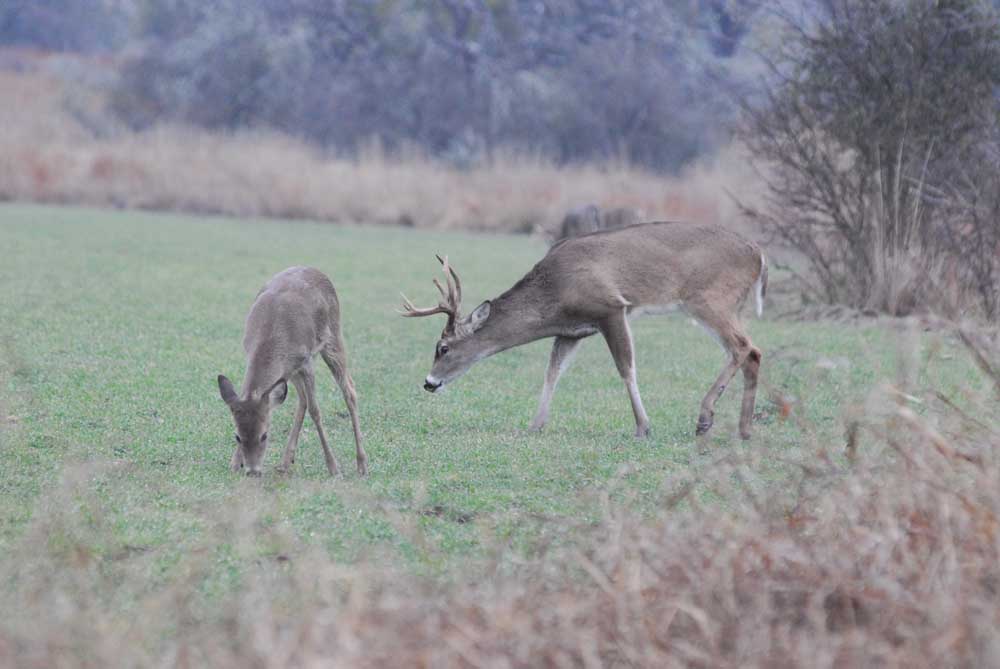Fact Or Fiction: Science does not support the internet’s hype of CWD jump
Published 11:00 pm Friday, May 3, 2024

- Chronic Wasting Disease was identified in the U.S. in the 1960s. Any Texas hunter can have their harvest tested for the disease. (Steve Knight/Tyler Morning Telegraph)
In this day and time there is nothing like a social media hot take to grab the world’s attention.
One recent example involving hunters was a headline suggesting two Texas hunters died after eating venison from deer infected by a “Zombie deer disease.”
The zombie disease is Chronic Wasting Disease, a central nervous system disorder that is ultimately fatal in deer. Although no one knows how long it has existed, it was first identified in a penned herd in the 1960s and in the wild in the 1990s. Today it exists in 33 states after having just been found in Indiana.
CWD moved off outdoor pages recently after the internet picked up a paper from The University of Texas at San Antonio suggesting two hunters died from Creutzfeldt-Jakob disease, a rare and fatal disease that causes brain damage and death.
According to the UTSA report a 72-year-old man died in 2022 with symptoms related to CJD. His death followed that of a friend who also died from CJD. Both were said to have eaten venison from the same deer population located in an area where Chronic Wasting Disease has been detected.
“They just made that assumption, no hypothesis or nothing,” said Blaise Korzekwa, Texas Parks and Wildlife Department white-tailed deer program leader. “They based it on hunters getting CJD and hunting in an area with CWD positive deer. They don’t even know if the deer they ate had CWD. They never tested the meat.”
But the UTSA paper is important because it is the first that attempts to connect the dots between the two diseases. But there are problems with the conclusion including the lack of proof and the fact it was published without the key peer review where hard questions are asked of those who wrote it. Also, there is the math. Texas hunters harvested almost 740,000 white-tailed deer during the 2023-24 season, and have consistently taken about that number for years. That means since CWD was first identified in the state in 2012 hunters have killed and consumed more than 8 million deer without any other CJD reports.
Creutzfeldt-Jakob first gained notoriety in the 1990s. There have been a few cases in Great Britain of people becoming sick from a variant form of the disease after eating diseased beef, but most cases are not related to food consumption.
Korzekwa said there has not been human research on CWD jumping to humans, but there have been states that have followed up with hunters hunting deer in areas where CWD has been found without a correlation.
There have also been tests in which animals were fed meat from infected deer that also did not show it transferred.
Korzekwa said the only time CWD was successfully transferred was when monkeys were injected with the prion protein that causes the disease. In that case researchers said humans could not eat enough meat to equal the amount injected.
Fortunately CWD has not knowingly caused a massive deer dieoff. And while it is found more in pen-reared deer samples, it can also be found in the wild in Texas. During the last testing period that ended in February TPWD collected more than 15,000 hunter-harvested and roadkill white-tailed deer, mule deer, exotics and elk for sampling. CWD was identified in six free-ranging white-tailed deer, 17 free-ranging mule deer and one elk.
“Of the six positive white-tailed deer, one was the positive in Bexar County, which was harvested as part of an effort to harvest and process deer to reduce overabundant deer populations in Hollywood Park,” Korzekwa said. “Another was the positive in Coleman County, two were from the existing CWD zone in the Panhandle, and two were from the existing CWD zone in Medina County. The positive mule deer and elk were from existing CWD zones in the Panhandle and Trans Pecos.”
Deer breeders in Texas are required to test all deer that die in their facility or die on a release site, and a live test is administered to deer before being released or moved to another property. Last year more than 24,000 breeder deer were tested with 154 testing positive for CWD in pens along with nine others on release sites. One elk on a breeder deer release site also tested positive.
Korzekwa said Texas currently has a deer herd estimated at 4.7 million spread across almost every county in the state. At present there are 29 CWD zones across 43 counties where it is mandatory that hunters have their deer tested.
However, the number of current zones, zone size and mandatory check requirements could change prior to the 2024-25 season. The Parks & Wildlife Commission is expected to vote on the changes at its May meeting.
Whether hunting in a CWD zone or not, hunters can have their deer tested.
“I would encourage hunters to get some tested. If they are in an area close to a zone, I recommend getting some tested,” Korzekwa said.
The testing is free and only requires the head and a small portion of the neck so biologists can extract a lymph node located just behind the jaw.
There are drop boxes for samples located in some counties, otherwise hunters can contact their local TPWD wildlife biologist about testing.
Other recommendations are not to eat meat from deer that appear sick or to consume brain, eyeballs, spinal cord, spleen or lymph nodes.
For more information on Chronic Wasting Disease in Texas go online to https://tpwd.texas.gov/huntwild/wild/diseases/cwd/, or contact your local TPWD wildlife biologist.
—Contact Knight at outdoor@tylerpaper.com






